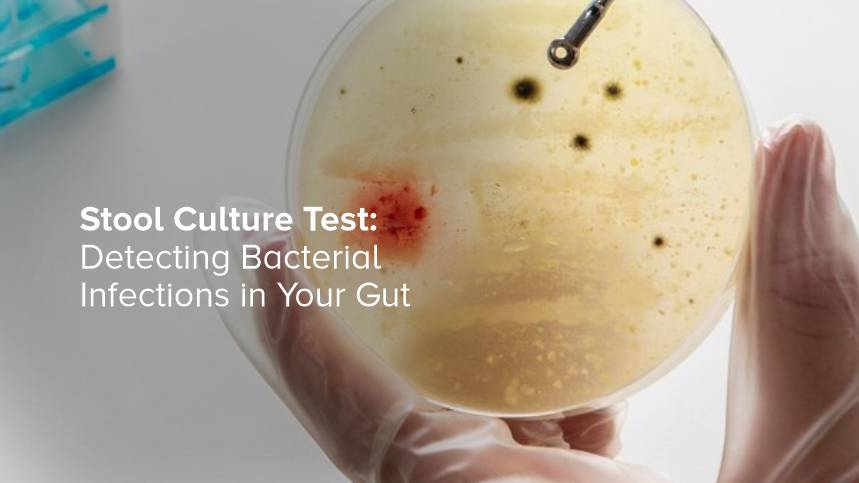


Condition
- Others
- Others
- Others
- Others
- Others
- Others
- Others
- Others
- Others
- Others
- Others
- Others
- Others
- Others
- Others
- Others
- Others
- Others
- Others
- Others
- Others
- Others
- Others
- Others
- Others
- Others
- Others
- Others
- Others
- Others
- Others
- Others
- Others
- Others
- Others
- Others
- Others
- Others
- Others
- Others
- Others
- Others
- Others
- Others
- Others
- Others
- Others
- Others
- Others
- Others
- Others
- Others
- Others
- Others
- Others
- Others
- Others
- Others
- Others
- Others
- Others
- Others
- Others
- Others
- Others
- Others
- Top tests
- Top tests
- Top tests
- Top tests
- Top tests
- Top tests
- Top tests
- Top tests
- Top tests
- Preventive Health Checkup
- Top tests
- Top tests
- Top tests
- Top tests
- Blood Banking & Transfusion
- Lifestyle Packages
- Blood Banking & Transfusion
- Blood Banking & Transfusion
- Top tests
- Top tests
- Lifestyle Packages
- Diabetes
- Blood Banking & Transfusion
- Blood Banking & Transfusion
- Blood Banking & Transfusion
- Blood Banking & Transfusion
- Blood Banking & Transfusion
- Others
- Others
- Others
- Others
- Blood Banking & Transfusion
- Blood Banking & Transfusion
- Blood Banking & Transfusion
- Blood Banking & Transfusion
- Vitamin Deficiency
- Vitamin Deficiency
- Vitamin Deficiency
- Vitamin Deficiency
- Vitamin Deficiency
- Blood Banking & Transfusion
- Blood Banking & Transfusion
- Blood Banking & Transfusion
- Blood Banking & Transfusion
- Diabetes
- Diabetes
- Heart Disease & Hypertension
- Preventive Health Checkup
- Diabetes
- Preventive Health Checkup
- Preventive Health Checkup
- Diabetes
- Diabetes
- Heart Disease & Hypertension
- Top tests
- Heart Disease & Hypertension
- Diabetes
- Top tests
- Diabetes
- Heart Disease & Hypertension
- Lifestyle Packages
- Heart Disease & Hypertension
- Lifestyle Packages
- Heart Disease & Hypertension
- Heart Disease & Hypertension
- Lifestyle Packages
- Preventive Health Checkup
- Preventive Health Checkup
- Top tests
- Preventive Health Checkup
- Heart Disease & Hypertension
- Heart Disease & Hypertension
- Heart Disease & Hypertension
- Top tests
- Top tests
- Lifestyle Packages
- Heart Disease & Hypertension
- Heart Disease & Hypertension
- Top tests
- Heart Disease & Hypertension
- Preventive Health Checkup
- Diabetes
- Lifestyle Packages
- Heart Disease & Hypertension
- Top tests
- Heart Disease & Hypertension
- Heart Disease & Hypertension
- Diabetes
- Lifestyle Packages
- Preventive Health Checkup
- Diabetes
- Top tests
- Diabetes
- Allergy
- Heart Disease & Hypertension
- Diabetes
- Heart Disease & Hypertension
- Diabetes
- Lifestyle Packages
- Lifestyle Packages
- Top tests
- Preventive Health Checkup
- Lifestyle Packages
- Preventive Health Checkup
- Preventive Health Checkup
- Diabetes
- Top tests
- Heart Disease & Hypertension
- Preventive Health Checkup
- Top tests
- Heart Disease & Hypertension
- Lifestyle Packages
- Lifestyle Packages
- Diabetes
- Preventive Health Checkup
- Top tests
- Diabetes
- Top tests
- Preventive Health Checkup
- Preventive Health Checkup
- Preventive Health Checkup
- Diabetes
- Lifestyle Packages
- Lifestyle Packages
- Heart Disease & Hypertension
- Lifestyle Packages
- Heart Disease & Hypertension
- Lifestyle Packages
- Preventive Health Checkup
- Preventive Health Checkup
- Preventive Health Checkup
- Lifestyle Packages
- Top tests
- Lifestyle Packages
- Top tests
- Lifestyle Packages
- Top tests
- Diabetes
- Diabetes
- Others
- Blood Disorders
- Top tests
- Others
- Others
- Others
- Fever
- Fever
- Blood Disorders
- Blood Disorders
- Preventive Health Checkup
- Preventive Health Checkup
- Profile
- Kidney Disease
- Kidney Disease
- Diabetes
- Diabetes
- Heart Disease & Hypertension
- Preventive Health Checkup
- Lifestyle Packages
- Thyroid Disorder
- Diabetes
- Diabetes
- Diabetes
- Diabetes
- Diabetes
- Diabetes
- Diabetes
- Top tests
- Allergy
- Top tests
- Top tests
- Top tests
- Top tests
- Diabetes
- Top tests
- Diabetes
- Top tests
- Top tests
- Top tests
- Liver Disease
- Diabetes
- Top tests
- Vitamin Deficiency
- Top tests
- Top tests
- Liver Disease
- Top tests
- Top tests
- Top tests
- Anemia
- Anemia
- Anemia
- Diabetes
- Diabetes
- Anemia
- Top tests
- Top tests
- Top tests
- Preventive Health Checkup
- Thyroid Disorder
- Heart Disease & Hypertension
- Top tests
- Preventive Health Checkup
- Diabetes
- Heart Disease & Hypertension
- Top tests
- Fever
- Allergy
- Liver Disease
- Lifestyle Packages
- Heart Disease & Hypertension
- Top tests
- Arthritis
- Top tests
- Top tests
- Heart Disease & Hypertension
- Kidney Disease
- Preventive Health Checkup
- Allergy
- Top tests
- Lifestyle Packages
- Top tests
- Kidney Disease
- Top tests
- Lifestyle Packages
- Top tests
- Preventive Health Checkup
- Preventive Health Checkup
- Top tests
- Top tests
- Vitamin Deficiency
- Allergy
- Diabetes
- Top tests
- Top tests
- Top tests
- Top tests
- Heart Disease & Hypertension
- Allergy
- Top tests
- Preventive Health Checkup
- Top tests
- Top tests
- Infertility
- Top tests
- Lifestyle Packages
- Allergy
- Diabetes
- Heart Disease & Hypertension
- Lifestyle Packages
- Preventive Health Checkup
- Preventive Health Checkup
- Top tests
- Preventive Health Checkup
- Top tests
- Diabetes
- Top tests
- Infertility
- Top tests
- Thyroid Disorder
- Top tests
- Allergy
- Preventive Health Checkup
- Vitamin Deficiency
- Top tests
- Top tests
- Infertility
- Lifestyle Packages
- Diabetes
- Liver Disease
- Kidney Disease
- Vitamin Deficiency
- Top tests
- Heart Disease & Hypertension
- Heart Disease & Hypertension
- Top tests
- Heart Disease & Hypertension
- Heart Disease & Hypertension
- Heart Disease & Hypertension
- Infertility
- Heart Disease & Hypertension
- Vitamin Deficiency
- Vitamin Deficiency
- Arthritis
- Arthritis
- Top tests
- Top tests
- Lifestyle Packages
- Preventive Health Checkup
- Lifestyle Packages
- Preventive Health Checkup
- Vitamin Deficiency
- Top tests
- Lifestyle Packages
- Lifestyle Packages
- Preventive Health Checkup
- Top tests
- Preventive Health Checkup
- Top tests
- Heart Disease & Hypertension
- Infertility
- Top tests
- Top tests
- Preventive Health Checkup
- Lifestyle Packages
- Top tests
- PCOD
- Preventive Health Checkup
- Lifestyle Packages
- Preventive Health Checkup
- Top tests
- Fever
- PCOD
- Kidney Disease
- Top tests
- Top tests
- Preventive Health Checkup
- Preventive Health Checkup
- Liver Disease
- Thyroid Disorder
- Top tests
- Heart Disease & Hypertension
- PCOD
- Top tests
- Arthritis
- Preventive Health Checkup
- Kidney Disease
- Lifestyle Packages
- Top tests
- Allergy
- Top tests
- Top tests
- Diabetes
- Thyroid Disorder
- Preventive Health Checkup
- Top tests
- Lifestyle Packages
- Preventive Health Checkup
- Top tests
- Kidney Disease
- Liver Disease
- Infertility
- Top tests
- Anemia
- Top tests
- Top tests
- Top tests
- Preventive Health Checkup
- Bone Health
- Cancer
- Fatty Liver

Tests
Our digestive system is home to a vast community of microorganisms—most of which are harmless and even beneficial. However, sometimes harmful bacteria can invade the gut, leading to discomfort, illness, or more serious infections. One of the most effective ways to identify these harmful invaders is through a stool culture test.
What Is a Stool Culture Test?
A stool culture test is a laboratory test used to identify bacteria that may be causing an infection in the gastrointestinal (GI) tract. The test involves collecting a sample of your stool (feces) and analyzing it in a lab to detect disease-causing organisms.
The sample is placed in a special substance (culture medium) that promotes bacterial growth. If harmful bacteria are present, they will grow over a few days and can be identified under a microscope or through biochemical tests.
Why Is a Stool Culture Test Done?
Your doctor might recommend a stool culture test if you are experiencing signs of a gastrointestinal infection. These symptoms may include:
- Persistent diarrhea
- Bloody or mucous-filled stools
- Abdominal cramps or pain
- Fever
- Nausea or vomiting
The test helps diagnose infections caused by bacteria such as:
- Salmonella
- Shigella
- Campylobacter
- Escherichia coli (E. coli)
- Yersinia enterocolitica
- Clostridium difficile (often tested separately but may be related)
Understanding the Importance of the Test
Bacterial infections of the gut are often self-limiting but can sometimes cause severe illness, especially in:
- Children
- Elderly individuals
- People with weakened immune systems
- Travelers returning from countries with poor sanitation
Timely detection through a stool culture test allows for:
- Accurate diagnosis of the bacterial pathogen
- Appropriate treatment, including antibiotics if necessary
- Prevention of complications such as dehydration, sepsis, or kidney damage
- Limiting the spread of contagious infections, especially in food handlers or caregivers
How Is the Stool Sample Collected?
Here’s a step-by-step guide on how to collect a stool sample for culture:
- Get a sterile container
You will be provided a sterile, leak-proof container with a screw-top lid for collecting the stool sample. - Avoid contamination
Make sure the stool does not mix with urine or water from the toilet. You can use a clean container, plastic wrap, or newspaper to catch the stool before transferring it to the collection container. - Collect a small amount
Use the scoop attached to the lid or a spatula to collect a small portion (usually about a tablespoon) of the stool. Include any part that has blood or mucus. - Seal and label
Close the container tightly, label it with your name, date, and time of collection, and wash your hands thoroughly. - Transport to the lab
Deliver the sample to the diagnostic lab as soon as possible, preferably within 2 hours. Some labs may provide refrigeration instructions if there’s a delay.
How Is the Test Performed in the Lab?
Once the sample reaches the lab:
- Plating – The sample is spread onto culture media that supports bacterial growth.
- Incubation – The plates are incubated at a specific temperature (usually 35–37°C) for 24–48 hours.
- Observation – Technicians examine the plates for bacterial colonies.
- Identification – If bacteria grow, they are further tested to identify the specific species using biochemical, immunological, or molecular methods.
- Sensitivity Testing – In many cases, labs also perform antibiotic susceptibility testing to determine the most effective treatment.
Interpreting the Results
Results are usually available within 2 to 4 days. Here’s how to interpret them:
Negative Result
If no harmful bacteria are found, the test is considered negative. This means your symptoms may be due to:
- Viral infections (e.g., norovirus, rotavirus)
- Parasites (which require different tests)
- Food intolerances
- Irritable bowel syndrome (IBS)
Positive Result
A positive result indicates the presence of a specific bacterial infection. Based on the pathogen identified, your doctor will recommend the appropriate treatment.
For example:
- Salmonella: May not always require antibiotics unless the case is severe.
- Shigella or E. coli: Often treated with antibiotics, especially in high-risk patients.
- Clostridium difficile: Needs targeted antibiotics and sometimes hospitalization.
Common Gut Bacteria Detected by Stool Culture
Let’s look at a few common culprits that cause GI infections:
- Salmonella
Usually contracted through contaminated food (like raw eggs or undercooked poultry). It causes diarrhea, fever, and abdominal cramps. - Shigella
Highly contagious and spread through person-to-person contact or contaminated water. Causes bloody diarrhea and fever. - Campylobacter
Often found in raw or undercooked poultry and unpasteurized milk. Symptoms include fever, cramping, and diarrhea. - E. coli (especially E. coli O157:H7)
Some strains are harmless, but others can cause serious illness, especially in children. Known for causing severe diarrhea and even kidney failure (hemolytic uremic syndrome). - Clostridium difficile
Commonly affects people after antibiotic use, disrupting normal gut flora. Causes watery diarrhea, fever, and colitis.
Who Should Get a Stool Culture Test?
Stool culture tests are especially useful for:
- Patients with persistent diarrhea (lasting more than 2-3 days)
- Travelers returning from regions with poor sanitation
- Hospitalized patients with new-onset diarrhea
- Children or elderly patients with dehydration
- Immunocompromised individuals
- Outbreak investigations in schools, nursing homes, or restaurants
Preparing for a Stool Culture Test
The test doesn’t usually require special preparation. However, inform your doctor if:
- You’ve recently taken antibiotics (this may affect the results)
- You’re on any other medications or supplements
- You’ve recently travelled or consumed unpasteurized dairy, undercooked meats, or street food
Stool Culture vs. Other Stool Tests
It’s important to note that stool culture tests specifically detect bacterial infections. Other stool tests include:
- Ova and Parasite (O & P) exam: Detects parasites like Giardia or Entamoeba.
- Fecal occult blood test (FOBT): Screens for hidden blood in the stool.
- PCR tests: Detect DNA of bacteria, viruses, or parasites and may give faster results.
In many cases, doctors may order a combination of tests to get a full picture of your digestive health.
How to Prevent Gut Infections
While testing and treatment are crucial, prevention is the best medicine. Here are some tips to reduce your risk of bacterial GI infections:
- Wash hands thoroughly with soap and water
- Cook food thoroughly, especially meat, eggs, and seafood
- Avoid unpasteurized milk and dairy products
- Wash fruits and vegetables before eating
- Drink safe, clean water—especially when traveling
- Practice good hygiene in shared spaces
Need a Stool Culture Test?
Book your test online with Ampath Labs for accurate results and convenient home sample collection. Our certified labs ensure high-quality diagnostics and quick turnaround times.
Book Now or visit your nearest Ampath Labs center today!
WANT TO BOOK HEALTH CHECKUP ?
Categories
Others
74
Top tests
100
Preventive Health Checkup
46
Blood Banking & Transfusion
16
Lifestyle Packages
35
Diabetes
40
Vitamin Deficiency
12
Heart Disease & Hypertension
37
Allergy
9
Blood Disorders
3
Fever
4
Profile
1
Kidney Disease
8
Thyroid Disorder
5
Liver Disease
6
Anemia
5
Arthritis
4
Infertility
6
PCOD
3
Bone Health
1
Cancer
1
Fatty Liver
1
Recent Blogs
Vitamin B1 Test: Why Thiamine Levels Matter for Your Health
Vitamin B1, also known as thiamine, is an essential nutrient that plays a critical role...
27-10-2025
Vitamin A Deficiency: Signs, Symptoms, and How to Prevent It
Vitamin A is an essential fat-soluble vitamin that plays a vital role in maintaining good...
27-10-2025
Fatty Acids Test: When Your Doctor Might Recommend It
Fatty acids play a crucial role in maintaining optimal health, yet many people remain unaware...
27-10-2025







